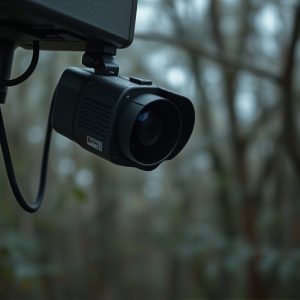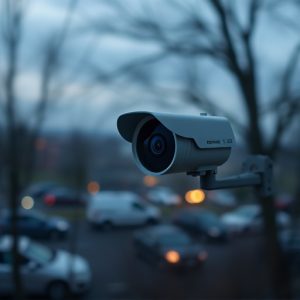Uncovering Small Hidden Cameras: Bedroom Surveillance Scanning Techniques
Small hidden cameras for bedroom surveillance have become popular due to their discreet design, adva…….
Small hidden cameras for bedroom surveillance have become popular due to their discreet design, advanced features like HD video, motion detection, and night vision, allowing homeowners to monitor their spaces while preserving privacy. These miniature devices can be seamlessly integrated into decor or everyday objects like lamps and alarm clocks, providing 24/7 monitoring. They deter intruders, offer evidence in legal matters, and ensure peace of mind for homeowners, especially those concerned about children's safety. Detecting these cameras requires a combination of visual inspection, signal scanning, and frequency analysis to maintain privacy.
Uncovering small hidden cameras in bedrooms has become a growing concern in today’s digital age. While these devices offer surveillance benefits, their clandestine nature poses significant privacy risks. This article delves into effective signal scanning methods to detect hidden cameras, exploring advanced technologies and techniques such as RF scanning, optical sensors, and soundwave analysis. Additionally, it provides insights into understanding the devices, prevention strategies, and legal considerations crucial for safeguarding your personal space from small hidden cameras in bedrooms.
- Understanding Small Hidden Cameras for Bedroom Surveillance
- – Definition and purpose of hidden cameras in bedrooms
- – Types of small hidden cameras available
- Detection Methods for Hidden Cameras
Understanding Small Hidden Cameras for Bedroom Surveillance
Small hidden cameras for bedroom surveillance have become increasingly sophisticated and popular due to their discreet nature and advanced capabilities. These miniature devices are designed to fit seamlessly into your home decor, offering a sense of security and peace of mind. They can be easily placed in corners, behind picture frames, or even integrated into everyday objects like lamps or alarm clocks, making them virtually invisible to the naked eye.
With high-definition video quality and advanced motion detection, these small hidden cameras capture intricate details and ensure your bedroom remains a safe haven. Many models also feature night vision capabilities, allowing for 24/7 monitoring without compromising on privacy. By employing these innovative devices, homeowners can maintain a vigilant eye on their personal spaces, deterring potential intruders and providing valuable evidence should any security breaches occur.
– Definition and purpose of hidden cameras in bedrooms
Hidden cameras, particularly those designed for use in bedrooms, are small, discreet devices intended to capture video or audio without the knowledge of occupants. These tiny yet powerful tools serve a variety of purposes, from ensuring home security and monitoring sleep patterns to maintaining privacy in shared living spaces. Small hidden cameras for bedrooms offer homeowners peace of mind by enabling them to remotely access live feeds, allowing them to verify the safety and well-being of their children or monitor suspicious activities within the private confines of their chambers.
The purpose of deploying these devices extends beyond mere surveillance. They can be employed to gather evidence in cases of theft, intrusion, or domestic disputes, providing crucial information for law enforcement. Moreover, they play a role in enhancing home security by deterring potential intruders and offering an extra layer of protection, especially for individuals who live alone or have expressed concerns about privacy breaches.
– Types of small hidden cameras available
Small hidden cameras, also known as spy cameras or surveillance cameras, come in various types suitable for different settings, including bedrooms. One common type is the miniature camera, which offers advanced features despite its tiny size. These cameras can be easily concealed within everyday items like clocks, pens, or even light switches, making them ideal for discrete monitoring.
For bedrooms, wireless hidden cameras are often preferred due to their ease of installation and flexibility. These cameras transmit video signals wirelessly to a receiver or recording device, allowing for covert observation without the need for messy cables. Some models can record high-definition video, ensuring clear images even in low-light conditions, catering to those seeking small hidden cameras for bedroom surveillance.
Detection Methods for Hidden Cameras
Detecting hidden cameras, especially small hidden cameras for bedroom spaces, requires a multi-faceted approach due to their often discreet and sophisticated design. One common method involves visual inspection using specialized equipment like infrared cameras that can pick up heat signatures different from the surroundings, revealing potential hidden devices. Additionally, signal scanning tools are employed to detect wireless signals emitted by hidden cameras, making it possible to identify and locate these devices even when they’re not visible.
Another effective technique is frequency analysis, where security experts scan for unusual radio frequencies or signal patterns that could indicate the presence of a hidden camera. This method is particularly useful in identifying small hidden cameras for bedrooms that may be transmitting data wirelessly to external servers. By combining these detection methods, professionals can ensure a thorough search and mitigate potential privacy breaches associated with such devices.
Hidden cameras, especially their small, discreet variants, offer a layer of security and surveillance in bedrooms. However, with their increasing prevalence, effective detection methods are crucial. Understanding the different types of small hidden cameras and employing advanced scanning techniques can help ensure that these devices are not used covertly to invade privacy. By staying informed and adopting robust detection practices, individuals can safeguard their personal spaces in today’s digital era.


